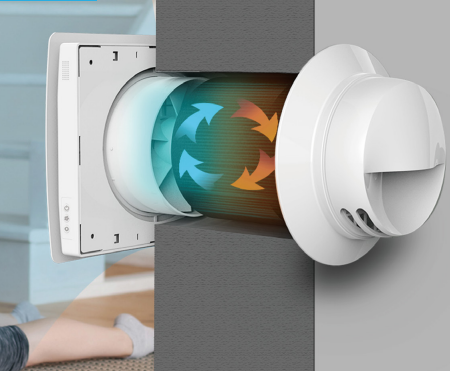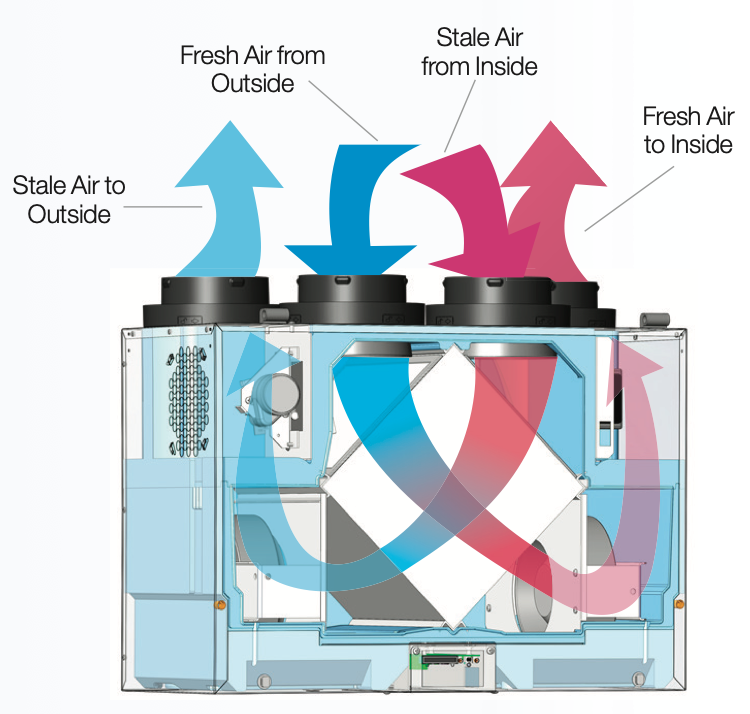Financial Insights with HRV in Variable Seasons
The All-Inclusive Overview to the Uses of Heat Recovery Ventilation in Modern Structures
Heat Recovery Ventilation (HRV) systems stand for a significant development in developing modern technology (HRV Heat Recovery Ventilation). They provide a method for trading stagnant indoor air with fresh outdoor air while minimizing energy loss. This method not only improves indoor air high quality however likewise adds to power performance in both property and industrial buildings. Comprehending the various applications and advantages of HRV can expose its essential role in modern-day style and sustainability efforts. The implications of this innovation deserve checking out better
Understanding Heat Recovery Ventilation Systems

Lots of modern buildings focus on energy performance, recognizing heat recuperation air flow (HRV) systems is essential for optimizing indoor air quality and reducing energy consumption. HRV systems work by moving warm from stagnant interior air to inbound fresh air, efficiently keeping comfy interior temperature levels while decreasing energy loss. These systems contain a warmth exchanger, fans, and ductwork that help with the blood circulation of air. During winter season, HRV devices capture and reuse heat from the outward bound air, while in summer season, they can aid cool down inbound air. By continually trading air, HRV systems likewise decrease moisture and the focus of interior toxins. Appropriate setup and maintenance of HRV systems are necessary for their efficiency and effectiveness in improving overall structure performance and convenience.
Benefits of Heat Recovery Ventilation
Heat recovery ventilation systems use many advantages that boost both power effectiveness and indoor air top quality in modern-day structures. By capturing and reusing energy from exhaust air, these systems substantially reduce cooling and heating costs, leading to lower energy usage. They keep a stable flow of fresh exterior air, lessening the risk of indoor air pollutants and allergens. This continual exchange assists control humidity degrees, avoiding mold and mildew growth and ensuring a healthier living setting. Furthermore, HRV systems add to sustainability goals by lowering general carbon impacts. Their ability to maximize ventilation without giving up thermal comfort makes them a valuable enhancement to modern building design, advertising both economic and environmental benefits.
Applications of HRV in Residential Structures
As house owners increasingly focus on power efficiency and indoor air quality, the applications of heat recovery air flow (HRV) systems in domestic structures have actually become extra prevalent. HRV systems are particularly useful in snugly sealed homes, where maintaining fresh air blood circulation is vital for stopping moisture buildup and interior pollutants. They efficiently transfer heat from outbound stagnant air to inbound fresh air, lowering power prices connected with heating & cooling. Additionally, HRVs can enhance comfort levels by controling moisture and temperature level. They are also versatile for numerous household layouts, consisting of single-family homes and multi-unit structures. On the whole, incorporating HRV systems sustains lasting living methods while making certain a much healthier interior atmosphere for residents.
HRV in Industrial and Industrial Setups
In industrial and commercial settings, the implementation of heat healing ventilation (HRV) systems has ended up being significantly critical for optimizing power efficiency and keeping air high quality. These systems successfully transfer heat from exhaust air to inbound fresh air, reducing the need for added home heating or cooling. This not just reduces energy costs but additionally adds to sustainability initiatives. Industries such as production, warehousing, and workplace buildings profit considerably from HRV systems, as they aid control temperature and moisture levels, ensuring a comfy and efficient environment. In addition, HRV systems aid in removing pollutants and excess dampness, boosting indoor air high quality. As pop over to this site laws around air high quality end up being stricter, the fostering of HRV innovation is most likely to expand, making it an important component of modern-day industrial and commercial facilities.
Future Trends in Heat Recovery Ventilation Technology

Regularly Asked Inquiries
How Does Heat Recovery Ventilation Impact Indoor Air Quality?
Heat recovery ventilation greatly enhances interior air top quality by continually trading stale indoor air with fresh exterior air while recovering energy. This procedure lowers contaminants, preserves optimal humidity degrees, and ensures a healthier environment for owners.
Can HRV Equipments Be Mounted in Existing Buildings?
HRV systems can undoubtedly be set up in existing structures. Retrofitting might require modifications to ductwork and ventilation layouts, but it substantially improves energy performance and interior air quality, making it a feasible option for older frameworks.
What Upkeep Is Required for HRV Equipments?

Exist Details Climates Where HRV Is Extra Reliable?
Heat recovery ventilation systems are specifically reliable in environments with considerable temperature level differences between periods. These systems maximize energy efficiency by recovering warmth from exhaust air, making them optimal for both chilly and moderately cozy settings.
Exactly How Do HRV Solutions Affect Energy Costs?
